
The Long Parliament was an English Parliament which lasted from 1640 until 1660. It followed the fiasco of the Short Parliament, which had convened for only three weeks during the spring of 1640 after an 11-year parliamentary absence. In September 1640, King Charles I issued writs summoning a parliament to convene on 3 November 1640. He intended it to pass financial bills, a step made necessary by the costs of the Bishops' Wars against Scotland. The Long Parliament received its name from the fact that, by Act of Parliament, it stipulated it could be dissolved only with agreement of the members; and those members did not agree to its dissolution until 16 March 1660, after the English Civil War and near the close of the Interregnum.

Mary, Queen of Scots, also known as Mary Stuart or Mary I of Scotland, was Queen of Scotland from 14 December 1542 until her forced abdication in 1567.

The Lord Chancellor, formally titled Lord High Chancellor of Great Britain, is the highest-ranking traditional minister among the Great Officers of State in Scotland and England in the United Kingdom, nominally outranking the prime minister. The lord chancellor is appointed by the sovereign on the advice of the prime minister. Prior to the union of England and Scotland into the Kingdom of Great Britain, there were separate lord chancellors for the Kingdom of England and the Kingdom of Scotland. There were Lord Chancellors of Ireland until 1922.
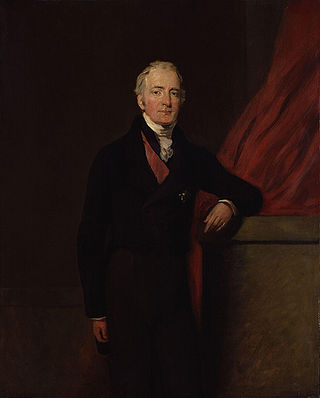
Henry Bathurst, 3rd Earl Bathurst, was a High Tory, High Church Pittite. He was an MP for thirty years before ennoblement. A personal friend of William Pitt the Younger, he became a broker of deals across cabinet factions during the Napoleonic era. After the Napoleonic Wars, Bathurst was on the conservative wing of the Tory party.

John Adrian Louis Hope, 1st Marquess of Linlithgow, 7th Earl of Hopetoun, was a British aristocrat and statesman who served as the first governor-general of Australia, in office from 1901 to 1902. He was previously Governor of Victoria from 1889 to 1895.

The Battle of Solway Moss took place on Solway Moss near the River Esk on the English side of the Anglo-Scottish border in November 1542 between English and Scottish forces.

Sir Edward Nicholas was an English officeholder and politician who served as Secretary of State to Charles I and Charles II. He also sat in the House of Commons at various times between 1621 and 1629. He served as secretary to Edward la Zouche and the Duke of Buckingham in the Admiralty and became a clerk of the Privy Council. He supported the Royalist cause in the English Civil War and accompanied the court into exile, before assuming the post of Secretary of State on the Restoration.

Earl of Glencairn was a title in the Peerage of Scotland. It was created in 1488 for Alexander Cunningham, 1st Lord Kilmaurs. The name was taken from the parish of Glencairn in Dumfriesshire so named for the Cairn Waters which run through it.
Sir Thomas Wharton, 1st Baron Wharton was an English nobleman and a follower of King Henry VIII of England. He is best known for his victory at Solway Moss on 24 November 1542 for which he was given a barony.
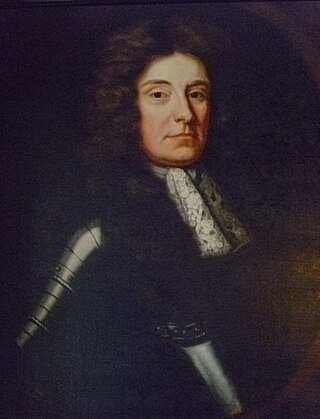
Archibald Campbell, 9th Earl of Argyll was a Scottish peer and soldier.
Alexander Cuninghame, 1st Earl of Glencairn, 1st Lord Kilmaurs was a Scottish nobleman.

William Cunningham, 9th Earl of Glencairn (1610–1664), was a Scottish nobleman, Lord Chancellor of Scotland, and a cavalier. He was also the chief of Clan Cunningham.
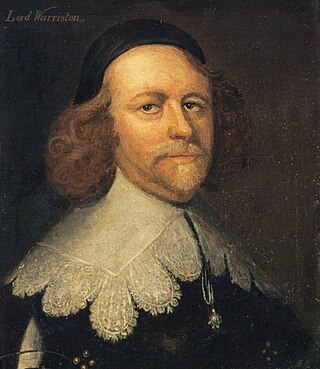
Archibald Johnston, Lord Wariston was a Scottish judge and statesman.
The Committee of Both Kingdoms,, was a committee set up during the Wars of the Three Kingdoms by the Parliamentarian faction in association with representatives from the Scottish Covenanters, after they made an alliance in late 1643.

Clan Cunningham is a Scottish clan. The traditional origins of the clan are placed in the 12th century. However, the first contemporary record of the clan chiefs is in the thirteenth century. The chiefs of the Clan Cunningham supported Robert the Bruce during the Wars of Scottish Independence. In the 15th and 16th centuries, the Clan Cunningham feuded with the Clan Montgomery. Historically, the chief of Clan Cunningham held the title of Earl of Glencairn. However, in modern times the chief of the clan is Cunningham of Corsehill. On 18 December 2013, Sir John Christopher Foggo Montgomery Cunninghame, Baronet of Corsehill, was recognized by Lord Lyon as Clan Chief after the chiefship had been vacant for over 200 years.
James Cunningham, 7th Earl of Glencairn (1552–1630) was a Scottish peer and member of the Privy Council of Scotland.
Alexander Cunningham, 5th Earl of Glencairn was a Scottish nobleman and Protestant reformer, prominent in the Scottish Reformation.
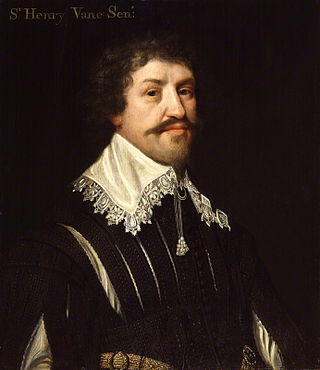
Sir Henry Vane, known as the Elder to distinguish him from his son, was an English politician who sat in the House of Commons at various times between 1614 and 1654. He served King Charles in many posts including secretary of state, but on the outbreak of the English Civil War joined the Parliamentary cause. He was the third cousin of Francis Fane, 1st Earl of Westmorland.
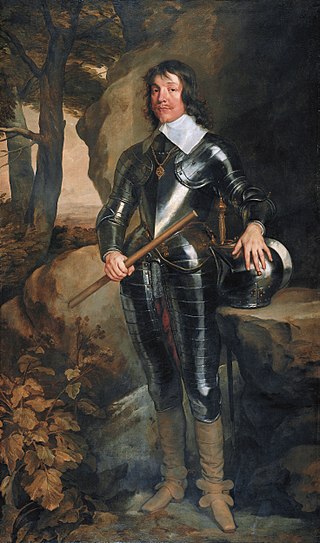
James Hamilton, 1st Duke of Hamilton, KG, PC, known as the 3rd Marquess of Hamilton from March 1625 until April 1643, was a Scottish nobleman and influential political and military leader during the Thirty Years' War and the Wars of the Three Kingdoms.
Robert Sempill, 3rd Lord Sempill was a Scottish lord of Parliament.



































